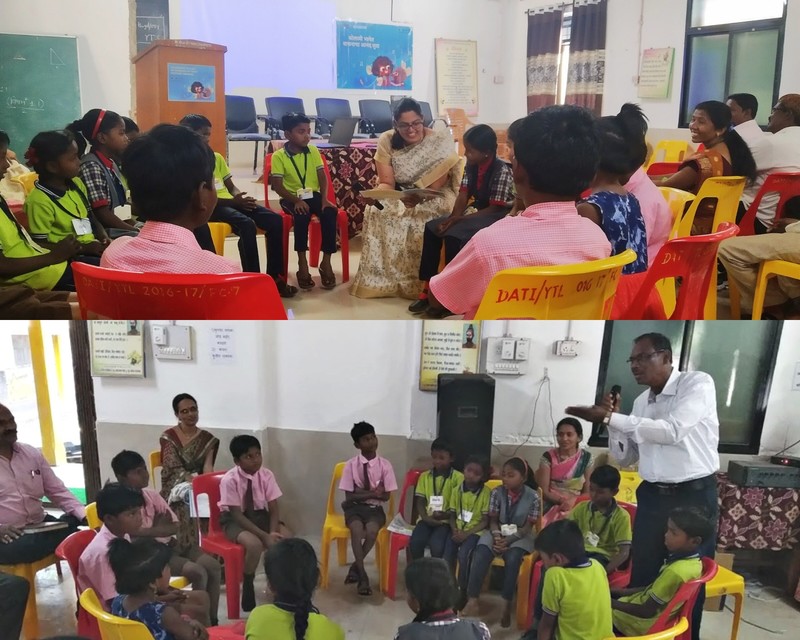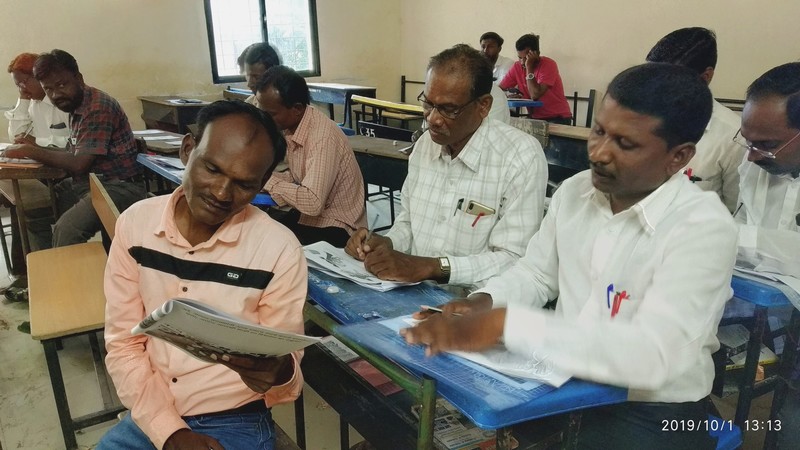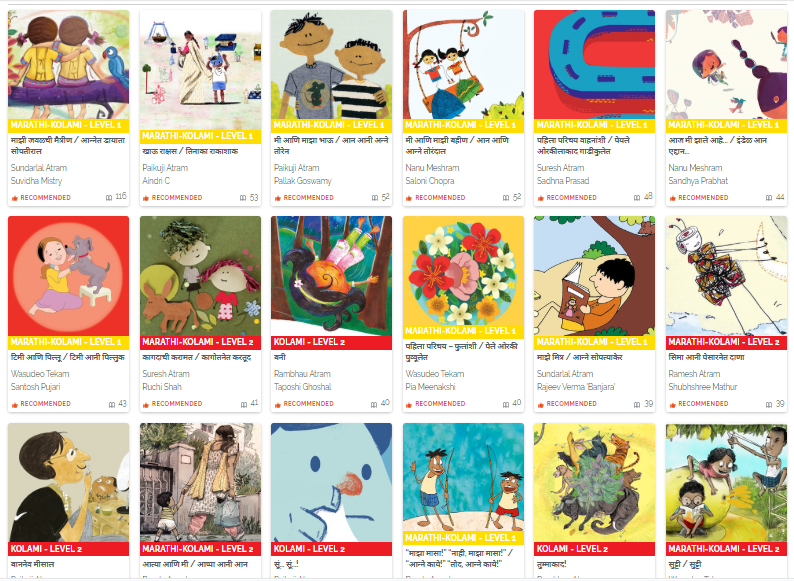#FreedomToRead2020: Alaknanda Sanap from IMLi on creating an open digital library of 100 storybooks in Kolami
Posted by Remya Padmadas on April 03, 2020
As part of StoryWeaver’s Freedom to Read 2020, the Institute for Multilingual Education (IMLi) has translated and created an open digital library of 100 storybooks in Kolami - a vulnerable indigenous language from Maharashtra. These books include bilingual Kolami-Marathi books. The digital storybooks were launched at the District Institute for Education and Teacher Training (DIET), Yavatmal on February 17, 2020, with chief guest Hon. Shri. Dipak Chavne (District Education Officer, Yavatmal) and keynote speaker, Dr. Prashant Gawande (Senior Lecturer, DIET, Yavatmal). Certificates were handed out to the educators who participated in the translation process and a reading session was conducted for Kolami children from schools in the district.
Here is an interview with Alaknanda Sanap, the founder of IMLi.
Do tell us about the IMLi - Institute of Multilingual Education, its vision, and the communities that you engage with.
The Institute for Multilingual Education (IMLi) is a registered trust working towards education and language education in India. While it has been active since 2017, it has been registered in 2018 by a group of social activists. They believe in the vision of the organization ‘to support and promote reading and multilingual education in the country with a view to promoting children's learning, engaging with community knowledge and culture and all-round development’. They believe this can be achieved through both academic pursuits such as research in language development, or through creation of multilingual books for children and through programmatic interventions such as teacher capacity building programs and advocacy.
IMLi has helped set up mini-libraries in anganwadis and school in Baramati district of Pune and trained anganwadi (pre-school) teachers on early childhood education and early literacy. They have created videos for readlongs for select books, and are in the process of creating supportive material for teachers to adopt MLE better in schools.
How did you come across StoryWeaver? What prompted you to enter into a collaboration?
IMLi had collaborated with a few organizations in Maharashtra who had translated books for tribal children and it was seen that these played a very good role in improving children's engagement with books and reading. When the Freedom to Read campaign was announced, it was felt that a similar effort could be undertaken for languages which really needed more books.
Do tell us about the Kolam community and their language. What resources are currently available? What are the challenges faced by Kolami children when they enter school?
The Kolams are a relatively small tribal group, spread across 4 states of south central India i.e. Andhra Pradesh, Chhattisgarh, Madhya Pradesh and Maharashtra. Until as recently as the 1940s, they typically practiced slash and burn farming and foraging, and were reluctant in intermingling or settling down. As such, in Maharashtra, they are part of the subcategory of particularly vulnerable tribal groups (PVTG), that are accorded more attention and support from the government for many welfare schemes. They are renowned for their familiarity with the jungle and skill in divination and the propitiation of local gods, particularly gods holding sway over forests and hills. Now, most of them are found in villages and plains where they work as tenant farmers or agricultural labourers, and a very small number of Kolams live in hill settlements. Some of them own the land they cultivate. They are scattered over a large area.
The Kolami language is part of the Dravidian language families, and as such, bears little to no resemblance with the state language of Marathi. Kolami children face a steep challenge when they enter formal centers of education such as anganwadi or school, as simple instructional words are also different.
What are the benefits of creating a local digital library of storybooks in Kolami?
If Kolami children get child-friendly reading material in addition to the syllabus, such as songs and stories, they will happily and easily familiarize themselves with Marathi letters and words. We have created and published bilingual books in Kolami-Marathi and books in Kolami on StoryWeaver.
Within Maharashtra, the Kolams are spread over three districts, and there are close to 200 primary schools with predominantly Kolami speaking children across the districts of Yavatmal, Chandrapur and Nanded, with close to 3500 children. These Kolami bilingual books can be used by teachers to support early literacy skills, and reading and writing instruction in classrooms

Photos from a Kolami reading session at DIET Yavatmal, held to mark the launch of an open digital library of 100 Kolami storybooks.
Tell us about the process of translation, and about the team that worked on this project.
IMLi reached out to the government teachers from the Kolam community, through the District Institute of Education and teacher training. The teachers were very happy to be part of such an initiative and enthusiastically agreed as this "was for the benefit of our children". Teachers passed on the word and referred each other and eventually 10 teachers were finalized to be part of the first workshop. While the initial plan was to translate the 100 books in phases, the enthusiastic support of the teachers made it possible to undertake the entire translation in one go, over the course of 2 workshops in a week. IMLi shared the importance of multilingual storybooks and helped the teachers understand the key points for translating for children. The workshop happened in mid September and was spread over a week.
Many of the teachers had translated the school textbooks in Kolami and had been part of other translation and literature collecting efforts in the community. Another round of review workshops was held in October when four of these senior teachers were invited to review the translations. These 2 workshops were also held across a week.

The translation team of educators at work, giving children access to storybooks in Kolami - a vulnerable indigenous language of Maharashtra.
After this, the reviewed translations were typed and first drafts of all books were prepared. After discussions, it was decided that most of the books should adopt a Marathi-Kolami layout and only a few books should be made in purely Kolami.
The draft Kolami books were then proofread with a team of volunteers who are working on a field research project on the Kolam community. Thus, after many rounds, the final books were prepared.

Storybooks in Kolami and Marathi-Kolami translated by Team IMLi
How do you hope to reach more children through your books in Kolami? How do you see the books being used by educators?
We plan to reach out to the Education Department and the Tribal Department to explore opportunities of collaboration. The Departments support publication and dissemination of books and story-readers for children in their respective schools. IMLi can also support the adoption of these books with teacher training sessions on pedagogy for integrating books in language learning.
Thank you so much, Alaknanda and Team IMLi, for giving children the #FreedomToRead in Kolami!
You can read the storybooks translated by IMLi here.